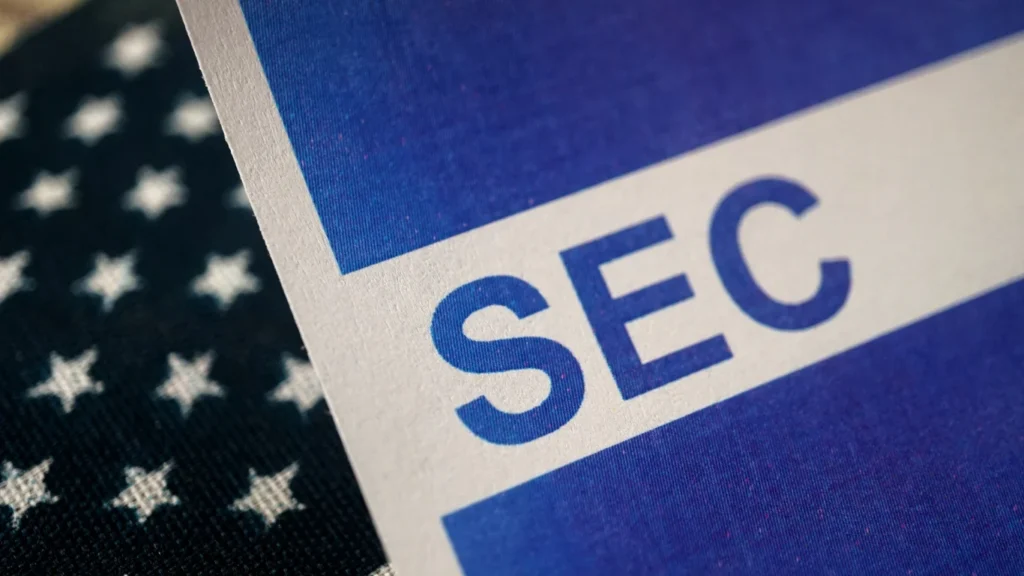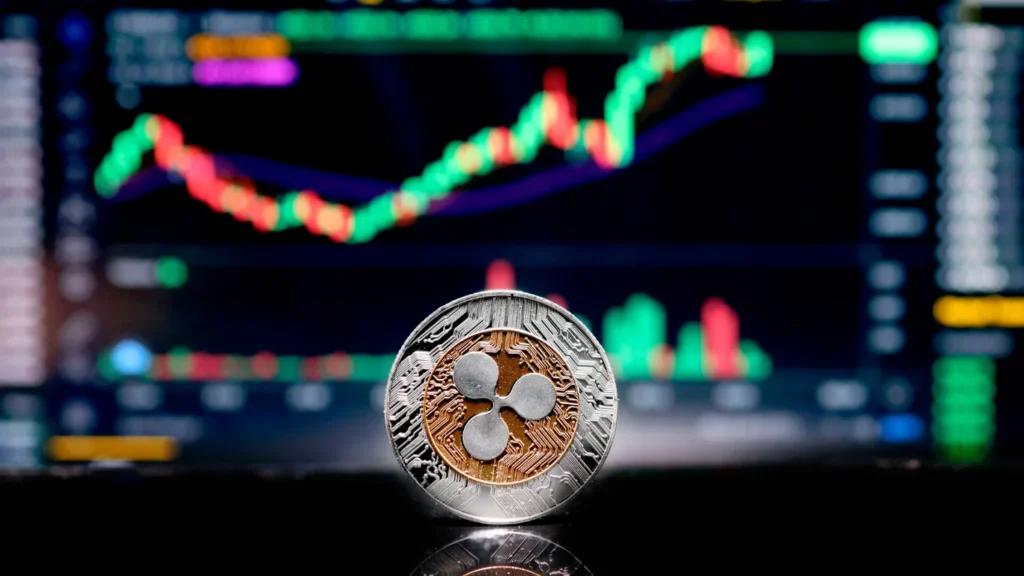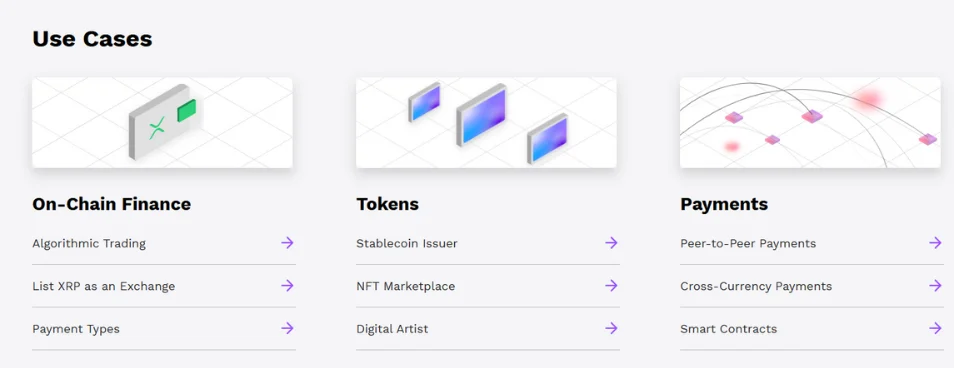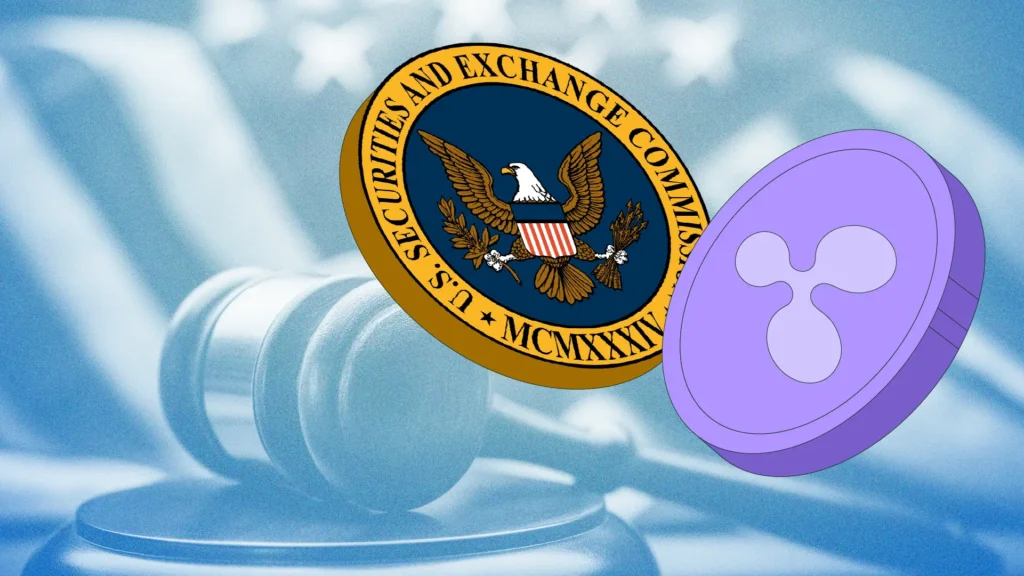The XRP SEC battle began in December 2020 and became one of the most important cases in cryptocurrency history. The Securities and Exchange Commission’s original claim stated that Ripple sold unregistered securities through XRP for several years. A significant breakthrough came in 2023 when a summary judgment gave Ripple a partial win. The ruling stated that blind bid-ask sales of XRP were not securities.
The legal proceedings led to a £125 million judgment against Ripple in August 2024. This included a ban on security fundraising that would last five years. The case drew more attention after the SEC appealed the Torres judgement in January 2025. Ripple had already filed its cross-appeal three months before. This ongoing legal battle remains crucial to the broader cryptocurrency market. The SEC dropped all but one of its cryptocurrency cases, which makes the Ripple SEC case stand out in the digital world.
Court Demands SEC Reviews New XRP Evidence
New details have surfaced in the Ripple SEC legal battle through the Office of Inspector General’s (OIG) investigation into possible conflicts of interest at the SEC. Former SEC Chair Gary Gensler kept these findings under wraps before stepping down on January 15. Acting Chair Mark Uyeda and Commissioner Hester Peirce have stayed quiet about what the investigation found.
What Evidence Has Emerged?
The investigation targets Bill Hinman, former SEC’s Division of Corporation Finance Director. Documents show Hinman kept meeting Simpson Thacher employees even after the SEC’s Ethics Division warned against it. Records also indicate that Hinman received substantial payments from Simpson Thacher while he worked on SEC’s crypto regulatory framework.
The Hinman documents became crucial in 2023. They exposed how SEC staff disagreed internally about ways to classify cryptocurrency. These messages, known as the ‘Hinman emails’, showed the internal debates about his 2018 speech where he said current Ethereum offers and sales weren’t securities transactions.
Attorney John Deaton submitted thousands of affidavits showing that retail investors knew nothing about Ripple’s efforts to influence XRP’s price. This supports Ripple’s case, especially since Judge Torres ruled earlier that blind bid-ask sales weren’t securities because buyers didn’t know they were getting XRP from Ripple.
Why Court Calls it Critical
The Court sees this evidence as vital for several reasons. The Hinman investigation links directly to how the SEC handles cryptocurrency regulation. Court papers show Hinman stayed in touch with Simpson Thacher, a firm tied to Enterprise Ethereum, despite warnings from the SEC’s Ethics Division.
The SEC tried and failed at least six times to protect these Hinman speech documents under attorney-client privilege. These revelations led Empower Oversight and Fox Business Journalist Eleanor Terrett to ask for the OIG’s report through Freedom of Information Act (FOIA) requests.
This evidence matters greatly as Ripple tries to reverse the AUD 191.12 million judgment from August 7, 2024. The Court’s view of this evidence might help Ripple distribute XRP to RippleNet ecosystem participants, including banks and payment processors, without regulatory limits.
These developments reach beyond just this case. Better Markets, a non-profit financial markets group, filed an Amicus brief supporting the SEC with three arguments that XRP sales fit the Howey test criteria for securities. New evidence about SEC’s internal conflicts and retail investor views keeps shaping how the Court understands this complex case.
SEC Faces Mounting Pressure as Deadline Approaches

The Securities and Exchange Commission must meet a crucial deadline on April 16, 2025, as Ripple prepares to respond to the SEC’s appeal. The regulatory body keeps its position against Ripple SEC while dropping several high-profile crypto cases, which creates market tension.
Timeline Creates Market Uncertainty
The SEC filed its opening appeal brief on January 15, 2025. They challenged Judge Torres’s ruling about programmatic XRP sales. The agency wants to overturn the lower Court’s decision about retail investor transactions. The SEC also questions the Court’s difference between institutional and retail investors. They argue this undermines the Howey test’s objective criteria. Ripple’s Chief Legal Officer Stuart Alderoty says the SEC just repeats rejected claims. The agency asked for more time to file its principal brief, which made people wonder about their confidence.
Market uncertainty grew after the Ripple SEC filed unexpectedly without saying which parts of Judge Torres’s July ruling they wanted to challenge. Nobody knows if they will reverse the AUD 191.12 million fine or focus on the broader ruling about programmatic XRP sales.
Legal Experts Question SEC’s Strategy
Attorney Jeremy Hogan points to three key dates when the case might end: March 14, April 11, and May 1. Legal analyst MetaLawMan thinks Ripple might be working on a deal to remove the injunction and ‘bad boy’ provisions from Judge Torres’s ruling.
The SEC’s approach gets more complex with recent changes:
- They dropped several high-profile lawsuits against Coinbase, Consensys, and Gemini.
- Their internal rules say the agency must vote to continue or drop the appeal – the Chair can’t decide alone.
- Chair Gensler’s exit, along with those of Democratic Commissioners Caroline Crenshaw and Jaime Lizarraga, might change the agency’s direction.
Former SEC official John Reed Stark doesn’t like these regulatory changes. He sees them as signs that the agency’s power is weakening. SEC Commissioner Hester Peirce now leads the agency’s Crypto Task Force and says the ‘regulation by enforcement’ era has ended.
The case got more complicated after Judge Torres ruled that programmatic XRP sales didn’t meet the Howey Test’s third requirement. If the SEC wins this appeal, XRP would fall under their oversight. This might force exchanges to remove XRP to avoid breaking US securities laws.
Market Reacts to Fresh Legal Development
The legal developments in the Ripple SEC case have triggered major XRP price movements. Market prices now react strongly to every regulatory update.
XRP Price Volatility Spikes

XRP price swings were dramatic in early 2025. The price reached a seven-year peak of AUD 5.20 in January before dropping to AUD 2.74 in February. A remarkable 35% surge happened in just one day, followed by a sharp 20% decline the next session.
Trump’s return to the White House has had various affects. The market jumped into action after Donald Trump announced U.S. crypto reserves. XRP price shot up to AUD 4.59 during the early excitement but later fell back to AUD 3.39. XRP trades at AUD 3.85, between its 50-day and 200-day Exponential Moving Averages.
Trading Volume Shows Interesting Pattern
Market dynamics reveal some compelling trends. XRP’s 24-hour volume jumped 46.20% to AUD 8.46 billion, while futures open interest dropped 9.72% to AUD 5.81 billion. This difference shows active retail trader participation but cautious institutional positions.
The technical indicators paint a mixed picture:
- The Relative Strength Index reads 38.12, suggesting oversold conditions ahead
- Support levels sit at AUD 3.82 and AUD 3.67
- Resistance zones appear at AUD 4.05 and AUD 4.20
Institutional Investors Take Notice
Big market players have shown more interest as legal developments unfold. Increased futures trading activity suggests large players are getting ready for price moves. Positive funding rates trend upward, showing traders will pay extra to keep long positions.
Three key factors drive institutional focus:
- SEC might withdraw its appeal
- Trump’s proposed Crypto Strategic Reserve Asset plan
- Regulatory clarity could come from the White House Crypto Summit
AI and Crypto Czar David Sacks confirmed the summit will detail cryptocurrency allocations, possibly including XRP. This news and broader regulatory changes have pushed institutional investors to rethink their asset exposure.
XRP stands uniquely positioned between traditional finance and cryptocurrency innovation. Short-term price swings continue, but trading volumes show steady interest from retail and institutional traders who await clear regulations.
Global Exchanges Adapt Their XRP Policies
Cryptocurrency exchanges worldwide have updated their XRP trading policies as regulatory developments unfold. The Trust is one of the largest XRP investment funds globally, with AUD 24.62 million in managed assets.
Major Platforms Revise Trading Rules
BitMart has grown its European presence through local strategies and better anti-money laundering procedures. The exchange’s security improvements mirror industry-wide changes that respond to regulatory oversight.
American investor accounts hold the XRP Trust’s shares, which lets them invest in XRP without buying the asset directly—a potential shift to a spot XRP ETP would let investors trade XRP on regulated national securities exchanges.
Trading platforms have rolled out these key changes:
- Enhanced user protection measures
- Stricter compliance protocols
- Revised cross-border transaction limits
Cross-border Transaction Impact

The XRP Network has become a key player in global payments. The platform, which is currently used by more than 100 financial institutions, expedites payment and settlement processes and lowers conventional interbank costs and delays.
XRP works well as a bridge token for cross-border transactions. Users can transfer value between currencies at minimal costs – about 0.00001 XRP per transaction. Banks and institutions find this appealing because:
- The XRP Ledger is capable of handling close to 1,500 transactions per second
- Consensus-based validation uses minimal energy
- Price manipulation becomes more complicated due to the global trading spread
The regulatory landscape keeps changing across regions. Regional differences in the regulatory environment are constant. The Financial Services Commission is now in charge due to South Korea’s Act on the Protection of Virtual Asset Users. Australian authorities see blockchain’s power to change cross-border payments.
RippleNet connects hundreds of financial institutions globally through a single API. The platform’s On-Demand Liquidity service uses XRP to provide liquidity during cross-border transactions as an alternative to traditional funding.
Better international payment processing has led to major partnerships. Ripple partnered with the Republic of Palau, while STASIS plans to launch the EURS stablecoin on the XRP Ledger. Novatti in Australia aims to release its Australian Dollar-backed stablecoin AUDC on the platform.
Global XRP trading makes price manipulation more complex and expensive. This feature and the large over-the-counter market, which provides liquidity and absorbs shocks, strengthen XRP’s position worldwide.
Legal Precedent Could Reshape Crypto Regulation
Major legal cases in 2025 will revolutionise digital asset regulation in the United States. The Second Circuit’s decisions will significantly impact regulators’ oversight of the cryptocurrency industry.
Similar Cases: Watch Closely
Cumberland’s recent challenge to SEC enforcement matches what others in the industry are doing. The district court raised a significant question about digital asset transactions and their classification as investment contracts under securities laws. Terraform Labs faced comparable regulatory issues, but the Court resisted their argument about secondary-market buyers.
Coinbase won approval to appeal its classification as an unregistered securities exchange. The Court called this a “clear and controlling question of law”. Kraken’s fair notice and due process defences moved forward, but the Court turned down their major question defence.
The Treasury’s power to regulate through information reporting rules faces tough questions. Research shows DeFi industry compliance costs could top AUD 397.54 billion each year. Many DeFi projects might not survive these costs.
Potential Industry-wide Effects
These case outcomes and expected regulatory changes under new leadership will alter how digital asset innovation works. Acting SEC Chair Mark Uyeda highlighted plans to help capital formation while keeping markets fair.
The impact reaches beyond current players:
- Trading platforms might need securities regulation
- Secondary market trades need precise classification
- Information reporting rules could change DeFi operations
- Institutional sales need better guidelines
The SEC’s withdrawal from several crypto cases hints at a new strategy. The Ripple lawsuit continues, showing its importance as a landmark case. XRP holder representative John Deaton stressed this case matters more than others.
Results could shape:
- Future digital asset regulations
- How cryptocurrency transactions get classified
- Trading platform compliance rules
- International transaction protocols
Kraken’s fair notice defence highlights industry-wide concerns. The Court recognised confusion about applying the Howey test to secondary market trades on platforms. Platform operators and users need this guidance.
These cases will define the digital asset industry’s future. Coinbase, America’s biggest digital asset exchange, shows how SEC regulations affect major trading platforms. The legal outcomes will determine when platforms must register with the SEC, setting new industry standards.
Conclusion
The XRP SEC legal battle has become a defining case in cryptocurrency regulation. Reviewing new evidence, especially the Hinman documents and conflict of interest investigations, strengthens Ripple’s stance. This case will shape how digital assets are classified and impact trading platforms and cross-border transactions.
XRP price has shown remarkable resilience in the market. Price movements show strong investor confidence even with ongoing regulatory challenges. Trading volumes remain robust, and institutional interest hasn’t wavered. Global exchanges continue to adjust their policies as regulatory requirements evolve. Financial institutions worldwide are drawn to the XRP Network’s speed and efficiency. It processes 1,500 transactions per second and streamlines cross-border payments.
This case could set vital precedents for cryptocurrency regulation. How courts interpret the Howey test for secondary market transactions will shape future regulatory frameworks. The cryptocurrency industry watches this pivotal case unfold. Its outcome could transform digital asset innovation and compliance requirements in the coming years.
How might the SEC’s appeal impact XRP’s legal status?
The SEC’s appeal is unlikely to change XRP’s non-security status. The appeal primarily focuses on Ripple’s sales practises and executive distributions, not XRP’s fundamental classification.
What are the potential outcomes of the SEC’s appeal?
The appeal could result in additional fines for Ripple or restrictions on certain XRP sales practices. However, it’s unlikely to significantly alter the previous ruling that XRP is not a security.
How has the ongoing legal battle affected XRP’s market performance?
XRP price volatility has been due to legal uncertainty, with significant swings following major case developments. However, trading volumes remain high, indicating sustained investor interest.
How are global exchanges responding to the ongoing legal situation regarding XRP?
Many exchanges have adapted their XRP trading policies in light of the legal developments. Some have implemented enhanced compliance measures, while others closely monitor the situation before making significant changes.



